#18th century - early 19th century
Explore tagged Tumblr posts
Text
Old naval slang
A small collection of terms from the 18th - early 20th century that were and probably still are known among sailors.
Admiralty Ham - Royal Navy canned fish Batten your hatch - shut up Beachcomber - a good-for-nothing Cape Horn Fever - feigned illness Cheeseparer - a cheat Claw off - to avoid an embarrassing question or argument Cockbilled - drunk Cumshaw - small craft - Chinese version of scrimshaw Dead Marine - empty liquor bottle Donkey's Breakfast - mattress filled with straw Dunnage - personal equipment of a sailor Flying Fish sailor - sailor stationed in Asian waters Galley yarn - rumour, story Hog yoke- sextant Holy Joe - ship's chaplain Irish hurricane- dead calm Irish pennant - frayed line or piece of clothing Jamaican discipline - unruly behaviour Knock galley west - to knock a person out Leatherneck - a marine Limey - a British sailor Liverpool pennant - a piece of string used to replace a lost button Loaded to the guards - drunk Old Man - captain of the ship One and only - the sailor's best girl On the beach - ashore without a berth Pale Ale - drinking water Quarterdeck voice - the voice of authority Railroad Pants - uniform trousers with braid on the outer leg seam Railway tracks - badge of a first lieutenant Round bottomed chest - sea bag Schooner on the rocks - roast beef and roast potatoes Show a leg - rise and shine Sling it over - pass it to me Slip his cable - die Sundowner - unreasonable tough officer Swallow the anchor - retire Sweat the glass - shake the hour glass to make the time on watch pass quickly - strictly forbidden ! Tops'l buster - strong gale Trim the dish - balance the ship so that it sails on an even keel Turnpike sailor - beggar ashore, a landlubber claiming to be an old sailor in distress Water bewitched - weak tea White rat - sailor who curries favor with the officers
Sailors' Language, by W. Clark Russell, 1883 Soldier and Sailor Words and Phrases. Edward Fraser and John Gibbons, 1925 Sea Slang, by Frank C. Bowen, 1929 Royal Navalese, by Commander John Irving, 1946 Sea Slang of the 20th century, by Wilfried Granville, 1949 The Sailor's Word Book, by Admiral W.H. Smyth, 1967
1K notes
·
View notes
Text

submitted by @shilohta 💙🖤
#historical fashion poll submission#historical fashion polls#fashion poll#historical dress#historical fashion#dress history#fashion history#fashion plate#18th century dress#18th century fashion#18th century#late 18th century#19th century#19th century fashion#19th century dress#early 19th century#1790s dress#1790s fashion#1790s#1800s fashion#early 1800s#1800s dress#1800s#1799#1800#1801#1802#1803#1804#trousers
95 notes
·
View notes
Text


#my post#chinese history#historical#history#support small business#Qing Dynasty#Baizhequn Hundred Pleat Skirt#1600s#17th century#1700s#18th century#1800s#1800s fashion#19th century#19th century dress#1890s#1900s#early 1900s#1900s fashion#1910's fashion#circa 1900#1910's#chinese fashion
112 notes
·
View notes
Text
The Regency Era Bandeau
Whether it was a plain strip of cloth...

Jean-Baptiste Greuze (French, 1725-1805) • Tête de jeune fille au ruban bleu • c. 1775
...a bejeweled band...

François Gérard (French, 1770–1837) • Portrait de Caroline Murat devant la baie de Naples (Portrait of Caroline Murat before the Bay of Naples) • Between 1808-1815
... or made from fine silk...

William Beechey (1753–1839) • Princess Augusta (1768-1840) • c. 1787
...the bandeau was popular on the heads of women of all classes.




#art#art history#fashion history#painting#portrait#fine art#women's fashion history#regency fashion#regency bandeau#fashion history hair accessories#historical portrait#late 18th century to early 19th century portrait paintings#art & fashion history blog#the resplendent outfit blog#françois gérard#jean baptiste greuze#william beechy
64 notes
·
View notes
Text

A yellow glass snuff bottle Probably Imperial, attributed to the Imperial Glassworks Beijing, 1740-1840
Christie's
46 notes
·
View notes
Text
sometimes when you look into historic myths and stories older than a couple hundred years you are going to meet characters that you cannot relate to and don’t particularly like because their values are wildly different than yours. and you do, actually, have to accept that and look at what the stories are actually saying and what they reveal about the world instead of tossing them aside rewriting them to suit your tastes, or else you’re going to just be another iolo morganwg and you don’t want to be another iolo morganwg.
#iolo morganwg was fascinating and bore a tremendous amount of responsibility for the late 18th/early 19th century welsh cultural revival#but We Do Not Need Another One#sroloc babbles
26 notes
·
View notes
Text

Red Currant
Philipp Otto Runge
Silhouette, late 18th–early 19th century
43 notes
·
View notes
Text

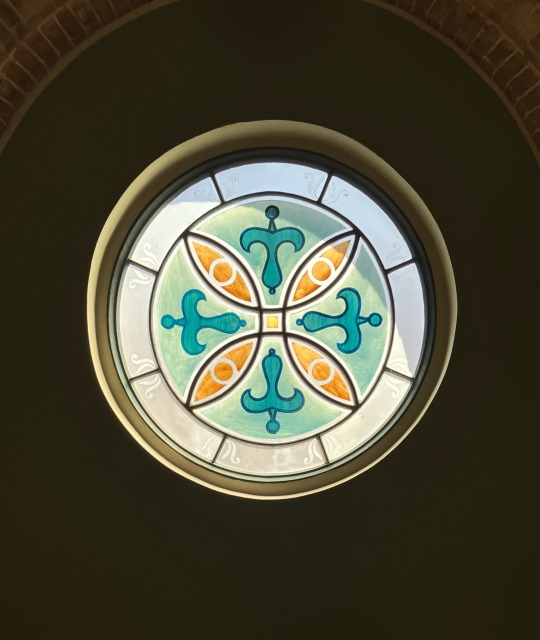
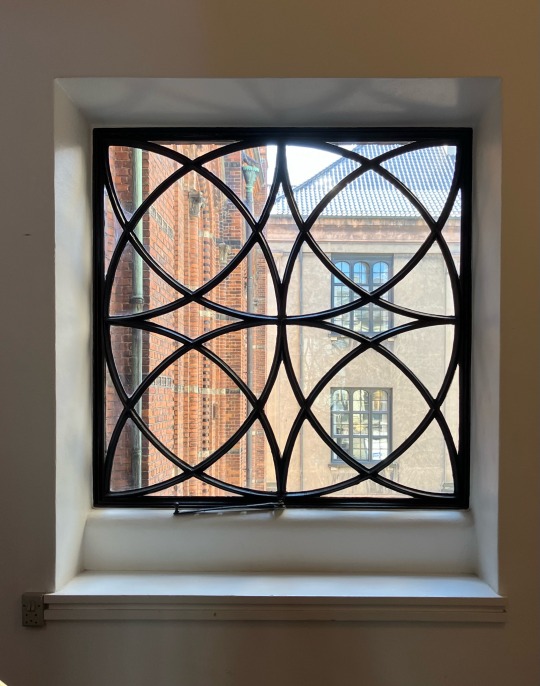
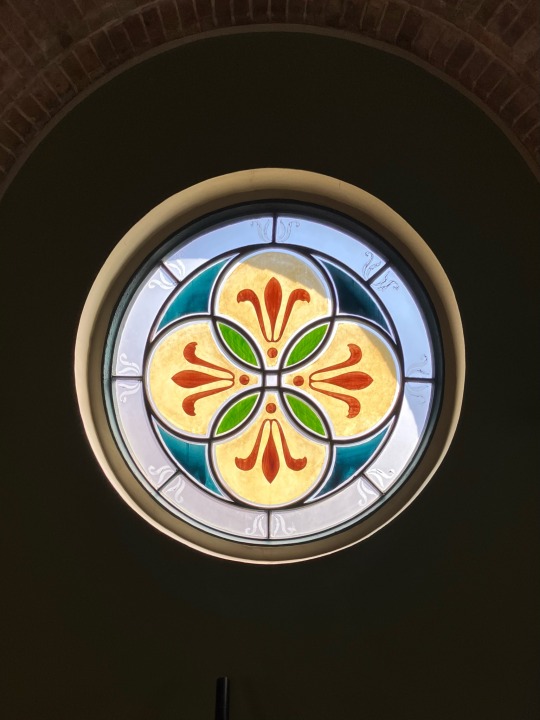
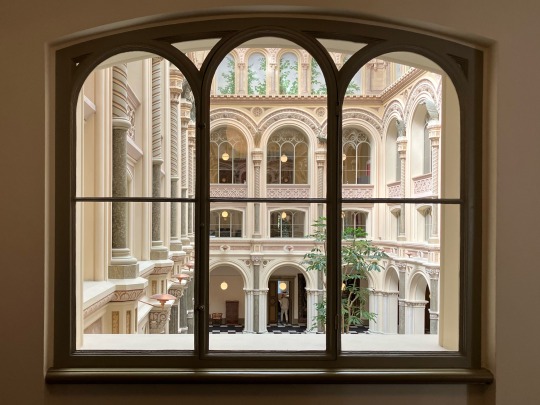

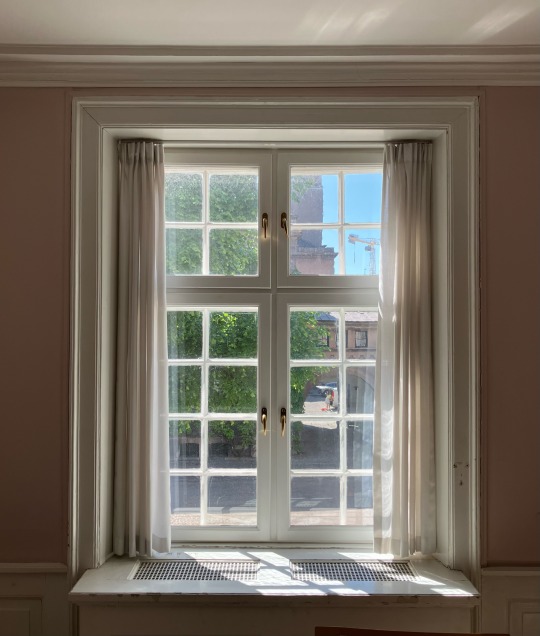
This week, I was asked to wander around the buildings at work and take pictures of indoor windows as research for an upcoming photo project. I think some of them are pretty neat. In any case, it was probably the most relaxing couple of work hours I’ve ever had.
#cecil blogs her life#Denmark#copenhagen#university#does this count as#dark academia#????#historical buildings#windows#interior#protected buildings#listed buildings#I couldn’t get any shots from the oldest building we have which is from the 1400s bc it was booked for meetings#the others are built between the 18th and the early 20th century#1700s architecture#1800s architecture#1900s architecture#18th century architecture#19th century architecture
225 notes
·
View notes
Text

Hanukkah menorah. German, 18th-early 19th c. Cast and punched copper alloy. Donated to the Danzig Synagogue and inscribed with dedication "to the children of the Danzig Synagogue Congregation" in 1935.
Provenance: Simon Anker donated to the Danzig Synagogue, 1935; Jewish Community of Danzig transferred to the Jewish Theological Seminary, New York, 1939; accessioned by the Jewish Museum, 1954
#reddit#artefactporn#oldspice75#hanukkah#hanukah#hannukah#menorah#german#18th century#early 19th century#cast#punched#copper alloy#danzig synagogue#1935#judaism
12 notes
·
View notes
Note
Hello, recently you answered an ask about how Hamilton reacted to the Hamilton-Madison fallout, and one of the things you said was "These men were very crucial figures in American law, which shows that, unlike men like Jefferson, he [Hamilton] was very selective in who he chose to associate with when it came to his work."
Was Jefferson particularly indiscriminate when it came to finding collaborators, or was Hamilton particularly selective (or a little bit of both)? Could you provide some examples for this contrast?
hello first of all, the structure of your ask had me literally salivating screaming crying on the floor because this is such a wonderfully structured ask and it is the perfect formula to get an in depth response bc there’s so much i could talk about here. i love you. anyway-
Let's break this down to each dude. First, the worst dude, Thomas "freak" Jefferson. Jefferson's political career began when he joined the House of Burgesses, which, as the name implies, is a house of Burges (its a legislature). His first major publication was A Summary View of the Rights of British America, a Revolutionary work of literature that called King George III a cunt in formal language, was done entirely by himself, and it was rejected by his contemporaries for being too radical. This gained him a reputation for being a blue haired liberal.
Source: The American Heritage Book of the Presidents and Famous Americans (book 2)
Jefferson would go on to write The Causes and Necessity of Taking up Arms with John Dickinson in July, 1775 to, yk, explain the causes and necessity of taking up arms against the British. John Dickinson was a very well known politician, being a member of the Continental Congress and one of the elite group of Americans who had the chance to be educated in England. Both Jefferson and Dickinson were known revolutionary voices, despite the differences of opinion that would arise between them in the following debate on independence. They were also both members of the Second Continental Congress.
Source: American Battlefield Trust, Delaware Historical and Cultural Affairs
The question of why Jefferson worked with Dickinson is most relevant to this ask. And the answer, in my opinion, is just because it was convenient. The Continental Congress was the best- "best"- men of each state coming together to represent their respective homelands. Dickinson and Jefferson most likely had conversations about the subject they would go on to write about, and decided to write it down and publish it for public benefit. We'll come back to this later.
Okay, now the elephant in the room: the Declaration of Independence. I find this subject so boring so bear with me. Jefferson was chosen by the Declaration committee (consisting of John Adams, Benjamin Franklin, Thomas Jefferson, Robert Livingston, and Roger Sherman) as he was already known as a Revolutionary writer and one of the best educated of them. He wrote the original draft on his own- well, technically- and then it was edited by the rest of the committee, and then by the rest of Congress.
Oh, but Henry! You said technically! Why? Well, dear reader, I'll tell you, be patient, jesus fucking christ. Jefferson highly based the Declaration off of Richard Henry Lee's resolution calling for independence in the Continental Congress, but mainly off of the philosophies of John Locke. That famous phrase we all know was almost word-for-word the writings of John Locke. I even once wrote an essay on how Jefferson essentially plagiarized John Locke in my sophomore government class.
"We hold these Truths to be self-evident, that all Men are created equal, that they are endowed by their Creator with certain unalienable Rights, that among these are Life, Liberty, and the Pursuit of Happiness..." -Thomas Jefferson, Declaration of Independence, July 4, 1776
Source: my pocket Declaration/Constitution LMAO i really busted that out like an absolute nerd
"All mankind... being all equal and independent, no one ought to harm another in his life, health, liberty or possessions." -John Locke, Second Treatise on Government, 1690
Source: brainyquote.com and a suspicious PDF of excerpts that I narrowly avoided a virus while accidentally downloading
I think that the Declaration is a pretty good example of how Jefferson, and 18th century American government, usually performed. This famous document was created by committee, and through education on 17th century philosophy. There were not multiple men working on the original draft of this, and the men who did work on it were not selected by Jefferson, and his major works are almost entirely attributed to him alone. He'd go onto write other historical documents such as Notes on Virginia and Anas (which are a more interesting and complex document) in this same form.
Source: Alexander Hamilton by Ron Chernow, Founders Online
He did consult with other men when it came to information and intelligence on political enemies later in his political career. These men were mostly hyper-relevant Democratic Republicans, who tended to be rich, southern landowners (aka slaveholders), at least those who associated with Jefferson. The most iconic of these were, of course, James Madison and James Monroe. Jefferson frequently consulted them, and Monroe (allegedly) gave Jefferson copies of the documents Hamilton showed to him to prove he had not been speculating with James Reynolds, but had actually been sleeping with his wife.
Source: Alexander Hamilton by Ron Chernow, The Three Lives of James Madison by Noah Feldman
To summarize, Jefferson was not necessarily indiscriminate with who he associated with, and he didn't even really work that much with other men on his major writings. However, we can see a definitive pattern of Jefferson only really associating with other members of his class, neither below or above him. And this just very simply makes sense. Jefferson, as did the rest of the 18th century, believed that there shouldn't be any cross contamination between the social classes. He also believed that the only really smart people were in his class. And he wasn't aggressive about this, it's just a passive belief due to the way society was structured.
UNTIL!
Alexander Hamilton was literally opposite to Jefferson in every sociocultural way. In Jefferson's eyes he was an ambitious upstart who rose through the ranks, defying the social order that kept society from collapsing.
You'll hear a lot of people say that in forming America, the Founding Fathers had undone this rigid social class system, but that really isn't true. The class system in Europe was entirely different than the one that developed in America, but it still definitely existed in some form. Without the court system, America formed a loose sort of aristocracy that depended on land ownership and/or success in the mercantile business. In Europe, you'd see members of the clergy having their own class, but in America, it was entirely based on wealth, and less on birthright, but if your parents were not wealthy, the only way you could become wealthy was by getting in on some kind of get-rich-quick scheme, like owning a plantation or being a lawyer.
What made Hamilton different from this was that Jefferson, and other enemies, could literally watch in real time as he rose through the ranks. He could see him go from a captain in the artillery, known for his bravery in the New York campaign (someone who would eventually be forgotten), to Washington's aide-de-camp (okay... but he'll probably still fade into obscurity), to a member of the Confederation Congress (oh! well, okay, but that doesn't particularly mean anything, this is probably the highest he'll get), to the only New York delegate in town for the Constitutional Convention and the only person from New York to sign it (well that'll get him in the history books...), to the FIRST SECRETARY OF THE TREASURY OF THE NEW US GOVERNMENT (WHAT THE FUCK HOW DID HE FUCKING DO THAT WHAT THE FUCK GET HIM OUT).
Source: Alexander Hamilton by Ron Chernow
So, let's talk about Hamilton's political career now, specifically through tracking his writings.
One thing the musical gets right is that Hamilton DEFINITELY utilized anonymous pamphlet publishing throughout his political career. And these are some of my favorite documents ever. From A Farmer Refuted to The Monitor to The Publius Letters to Pacificus, Hamilton absolute served irreparable cunt in all of these writings, and there are more than what I've listed, I just haven't finished my chronological list of Hamilton's published works.
"I'll use the press, / I'll write under a pseudonym, you'll see what I can do to him [Jefferson]." -Alexander Hamilton in Hamilton by Lin Manuel Miranda
Source: Blumenthal Performing Arts
All of these anonymous publishings had some things in common that I've used to categorize them:
A target (usually a person he didn't like and thought was immoral)
A core lesson (typically a political stance he was taking at the time that he wanted to defend and garner support for publically)
A newspaper publisher that was symbolic or strategically important in some way (either an enemy newspaper, and up-and-coming newspaper, an old friend's newspaper, etc.)
multiple editions
2-3 coauthors/beta readers
Almost each one of these publications follows this pattern, though number 5 tends to be the least common among all of them. But, since his college days, Hamilton would ask for his friends' input on his writings (whether or not he accepted their advice is not confirmed). Before he would give his college-era speeches, he would consult with the small debate group he and his friends made before he gave those speeches. When he was writing The Publius Letters, he most likely consulted with his lover, John Laurens, on the subject matter, as Laurens had close connections with congress, and the target (number 1 on the above list) was Samuel Chase, a congressman who had basically scammed soldiers out of food, causing many to starve for a prolonged period.
Source: Alexander Hamilton by Ron Chernow, John Laurens and the American Revolution by Gregory D. Massey
Like Jefferson, Hamilton had his magnum opus, and the influence of others played a major role in defining the document. Hamilton would ask other men, including William Duer, and Gouverneur Morris to write this document, but ultimately settled on John Jay and James Madison. This was, of course, The Federalist.
William Duer was related to Hamilton by marriage, as they married a set of cousins. Duer was educated in England and worked for the East India Company, which gave him a very good resume to be one of Hamilton's coauthors. However, the two submissions Duer made for The Federalist were rejected. Gouverneur Morris was a blue-blooded politician who gave the most speeches at the Constitutional Convention, a whopping 173. He spoke multiple languages and had been educated at King's College, which is now the ivy league Columbia. Morris was too busy to contribute to the project.
John Jay was the first coauthor selected. He had been the main draftsman of the New York State Constitution, a negotiator of the Treaty of Paris (1783), and was another alumni of King's College. He later became the first chief justice of the United States Supreme Court, and negotiate a treaty with Great Britain. Hamilton often called on him in regards to political matters, and the two were close, lifelong allies. Jay only wrote five of the 85 Federalist essays, because he was hit in the head with a fucking brick during the Cadaver Riots.
Source: Alexander Hamilton by Ron Chernow
The other principal author of The Federalist was James Madison. James Madison, in my opinion, was the most qualified to write The Federalist, despite his later delusions about the Constitution (which were largely the result of Jefferson's influence on his opinion but that's neither here nor there). James Madison was educated at what was considered the greatest educational institute in 18th century America: Princeton (then called the College of New Jersey). Madison was the reason Hamilton wasn't able to take an expedited course to his degree, because Madison had attempted to finish his four year education in two years, and had a nervous breakdown... fun fact...
But, still, he got his law degree from Princeton, and was in several legislatures, including the Virginia Governor's council where he met Jefferson. And of course, he was the author of the Virginia Plan, which was the foundation of the US Constitution of 1787. His notes on the Constitutional Convention are the most complete set of notes, and he was there every fucking day. So yeah, James Madison knew the Constitution pretty well, even if he eventually cared too much about states' rights to recognize what was blatantly written in the Constitution, and maintained that viewpoint until his presidency.
Source: Alexander Hamilton by Ron Chernow, The Three Lives of James Madison by Noah Feldman
The Federalist was not as evenly divided between the authors as Hamilton intended, since he could not shut the fuck up, but that's not the point. The point is that the men he sought to be his coauthors had several things in common: they attended prestigious educational institutions and had long histories of Revolutionary work. Reading of these men's person histories reads like you're going through a company's qualifications for their employees. Because it almost was except they weren't getting paid. Hamilton sought out these men based on their qualifications, and, as you can see by William Duer's rejected submissions, he had a high standard that they had to fit for him to affix his name next to theirs (which he didn't do until the weeks leading up to his death because he knew he was gonna die but that's a topic for another time).
I KNOW THIS IS LONG BUT IM STILL FUCKING GOING BECAUSE THIS IS WHAT HAPPENS WHEN YOU GIVE ME THE CHANCE TO ANSWER COMPLEX QUESTIONS ABOUT HISTORY INSTEAD OF THE SAME FOUR SHIT SUBJECTS THAT EVERY HISTORIAN COVERS IN THEIR BOOKS THANK YOU OKAY
This pattern of finding qualified contributors to his works continued throughout his life. Now, idk if you know this, but Hamilton was actually planning another The Federalist-style publication right before his death and i am LITERALLY SO EXCITED TO TALK ABOUT THIS
Hamilton told his visiting friend James Kent that he wanted to look through all of history and analyze government and the various forms it took throughout all of written history. Mirroring The Federalist, he intended to invite six to eight authors, including John Jay, Gouverneur Morris, Rufus King, John M. Mason, and James Kent. He thought that each of these men would write about the subjects in which they specialized (Kent on law, Mason on theological history, etc.) Hamilton would be in charge of writing a synthesis on the previous volumes.
"The conclusions to be drawn from these historical reviews he intended to reserve for his own task and this is the imperfect scheme which then occupied his thoughts." -Chancellor James Kent
Source: Alexander Hamilton by Ron Chernow
As you can imagine, these additional dudes followed the pattern shown above for Hamilton's qualifications for his coauthors, especially for a project this big. I mean, if this could have happened, it would have been literally incredible. I did the calculations, and it would have taken Hamilton five years after 1804 to get rid of all of his debts. If he had lived for that length of time, he could have started on this project, and alleviated the debts that later plagued his family. But that ties into my other theories on Hamilton's death, and that is just too weighty of a subject to get into in a post that's already this long.
To wrap this all up, the conclusion we can draw here is really just related to the class differences between Hamilton and Jefferson. Alexander Hamilton was not bound by a lack of social mobility in the 18th century, since he completely decimated that concept by his existence, which allowed him to view his co-contributors more objectively and more selectively. He handpicked those who he worked closely with based on their qualifications and their experience. His categorization of their abilities in that last example shows that he specifically sought them to speak on subjects they were most acquainted with.
Jefferson, on the other hand, didn't have that kind of social mobility, nor did he desire it. Jefferson stuck with his peers, who were mostly all lawyers of the same religion and political beliefs. While I'm not saying Hamilton was going around and writing alongside Democratic Republicans, he certainly didn't pick those he worked with based on like-mindedness or status. He chose them entirely on the basis of their revolutionary resumes, and that is really the difference we see in these two men's respective political careers. Was that the reason Jefferson was president and Hamilton wasn't? Definitely not. Was that the reason they didn't get along? Well, it certainly didn't make them like each other. Does it make Hamilton smarter? No, surprisingly. Do I like Hamilton more because of this? No comment.
I know this is lengthy, but I've literally been brewing up historical theory in my head for the past six months without having any outlet for it besides ranting at my parents and scribbling in the margins of Alexander Hamilton by Ron Chernow (as you can tell by my sources). I genuinely cannot say how much I appreciate this kind of question, because it not only gets me thinking, but it allows me to remember why I got into history in the first place, and why I want to spend the rest of my life educating people on the wonderous world of pussy politics between middle aged men that are so decomposed, the matter that made up their bald ass heads is probably in your drinking water (have fun thinking about that). Anyways, thank you for the ask and I hope you got enough examples :3
#alexander hamilton#john laurens#history#amrev#thomas jefferson#american history#founding fathers#gouverneur morris#james madison#john jay#james kent#early 19th century#18th century#1790s#hamilton#long post#asks#i have spent. four and a half hours on this post SJFKHS#could be more actually#this is why i need a podcast#this is the kind of thing that would be an hour long discussion rather than a tumblr post#that was fun#...what do i do with my life now#publius originals
60 notes
·
View notes
Note
Popular opinions of Bridgerton?
Oh, well, that's easy. Love the racially diverse casting and the no-brainer to make Stunning Goddess Nicola Coughlan a romantic lead. Next!
#ask#lesbianholocron#ask meme#ask game#positive hot takes#but seriously fuck the costumes and fuck their notions of women's lives in the late 18th-early 19th centuries
36 notes
·
View notes
Text


A French naval officer's sabre of the ‘Petit Montmorency’ type, late 18th - early 19th century
#naval artifacts#naval weapons#french#naval sabre#officer's belongins#early 19th century#18th century
350 notes
·
View notes
Text

A Royal Navy midshipman portrait dated 1770 - 1799, in the manner of John Dowman, ARA (Ruabon, North Wales, 1750 – Wrexham 1824).
#midshipman monday#age of sail#royal navy#dressed to kill#naval history#midshipman#the dating on this surprises me#i would have thought early 19th century#i expect more of a mullet on a boy in the late 18th century#sometimes it is still midshipman monday (when i find a good middy picture)
49 notes
·
View notes
Text


Fork and Knife, Meissen Porcelain Factory, English, Late 18th/Early 19th Century
From the Victoria & Albert Museum
#fork#knife#cutlery#porcelain#Meissen porcelain factory#english#late 18th century#18th century#1700s#early 19th century#19th century#1800s#georgian#regency#history
11 notes
·
View notes
Text
Regency Fashion: Veils
Regency era portraits and fashion plates show many examples of how sheer veils, sometimes of lace, were worn as fashionable accessories. For mourning, Regency and Victorian women wore black semi-opaque scarves. And, of course, veils were and continue to be fashionable as bridal wear.
Here are some of my favorite examples of veils in portrait paintings of the Neoclassical/Regency era:

Gilbert Stuart (American, 1755-1828) • Lucinda Smith • 1809
Solely a beautiful lacework veil arranged atop the head, framing the curls on the forehead. No other head accessory here or in the portraits below.



Thomas Lawrence (British, 1769-1830) • Lady Manners • 1794 • Cleveland Museum of Art, Cleveland, Ohio
In the Lawrence portrait, the veil (or perhaps less of a veil and more of a long scrarf) appears to be worn wrapped around the head, leaving some space for curls to show through, and flowing down gracefully past the waist.


Right: John Wesley Jarvis (British, 1780-1839) • Anne Brown Dickey • c. 1807-10
(Veil pinned to the the head with a lovely, pearl-studded comb.)
Left: Elizabeth Vigée Le Brun (French, 1755-1842) • Luise von Mecklenburg-Strelitz, Queen of Prussia • 1802
(A lace-edged scarf of the same material as the dress sleeves is worn with a bandeau and wrapped around a bundle of curls, flowing down the back. There's enough length that the woman can wrap a section of fabric around her lower arm.)
Below are fashion plate examples of hat veils.


These veils are likely worn to shield the face from damaging sun and/or to allow the wearer a certain amount of privacy, especially to hide crying eyes due a death or broken love affair.
#art#portrait#portrait painting#society portrait#fashion & art history blog#elizabeth vigée le brun#fashion history#veils in regency fashion#portraitist#regency fashion#thomas lawrence#john wesley jarvis#the resplendent outfit blog#late 18th-early 19th century art#gilbert stuart#british artist#american artist#french artist#female portrait#regency hat veils#neoclassical fashion history
31 notes
·
View notes
Text

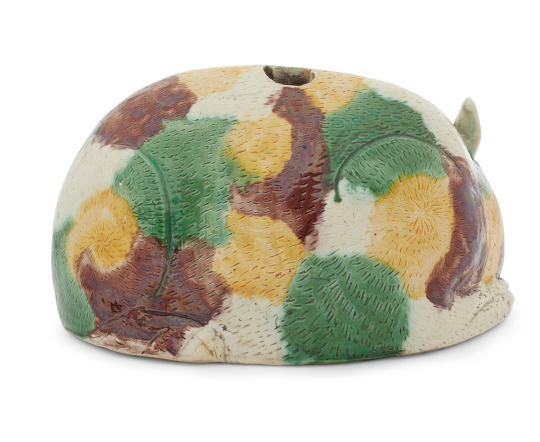
A night lantern in the form of a cat with egg and spinach glaze, Qing Dynasty, 18th - 19th Century
Christie's
#ceramics#cat#lighting design#china#qing dynasty#18th century#early 19th century#chinese art#egg and spinach
94 notes
·
View notes